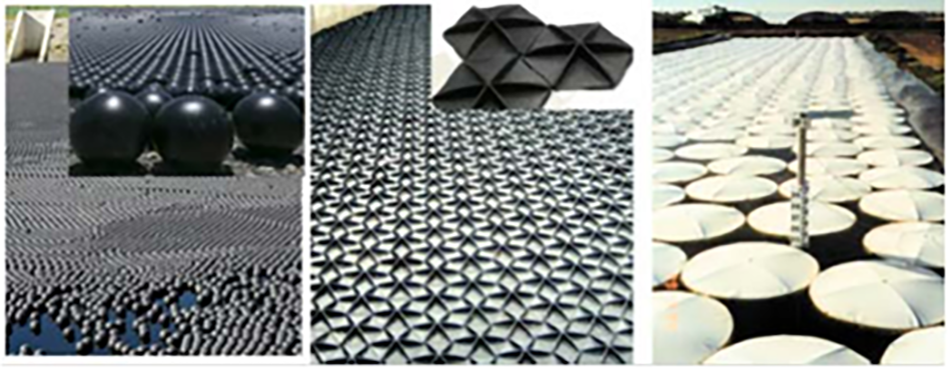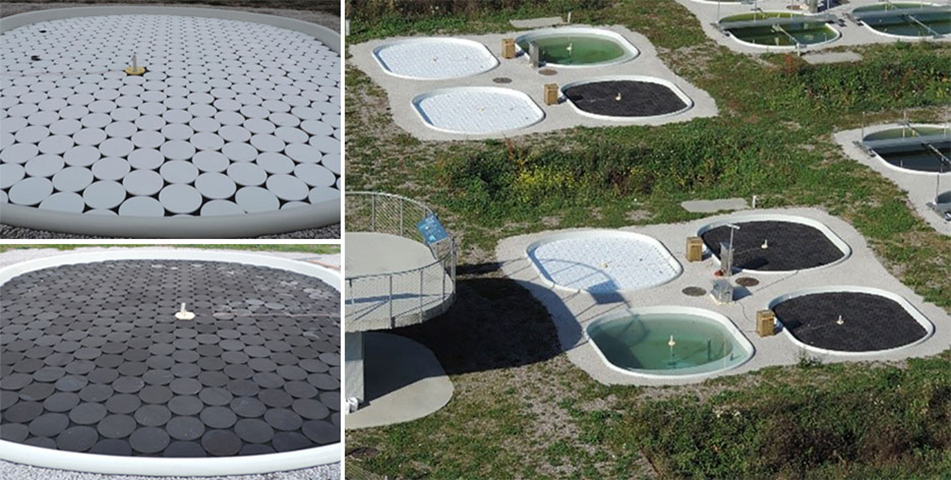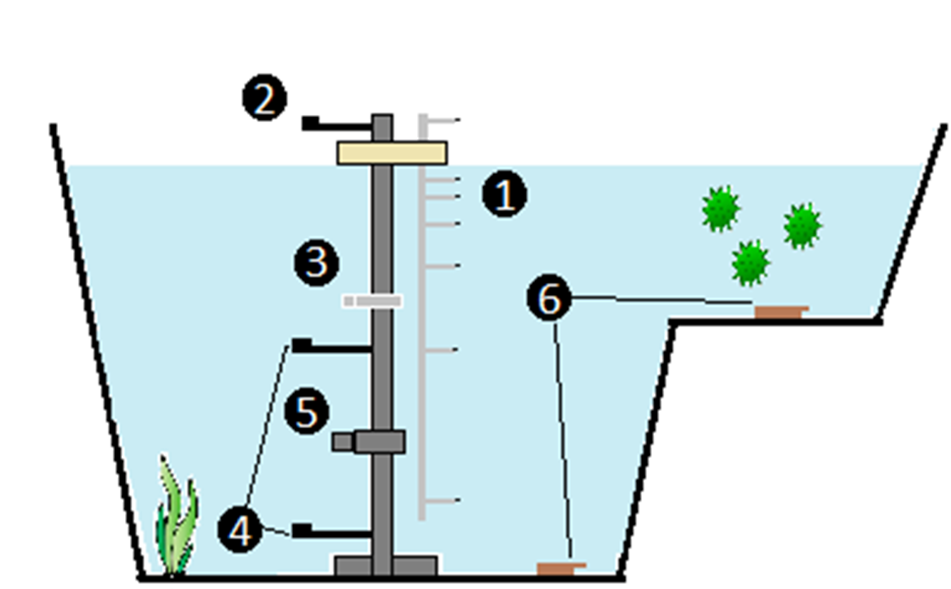Evaporation suppression
Evaporation suppression from water reservoirs using floating covers – Field Experiments
The increase in fresh water storage requires measures to reduce evaporative losses from water reservoirs. Water reservoirs provide stable water supply across dry periods; expected to expand with climate change (globally 6,200 km3 are stored in water reservoirs). Evaporative losses from reservoirs (20-50% of stored water) could be reduced by simple and low-cost means like self-assembling floating covers (Figure 1). Theoretical considerations and lab scale experiments postulate that 70-90% of evaporation losses could be reduced using floating covers but verification under field conditions is missing. In this project we quantify evaporation suppression efficiency of floating covers under varying field conditions and assess the physical and ecological effects of different covers (i.e., white vs. black covers) on the water body.

Fig1: Example of covers: (a) black plastic shade balls deployed by the city of Los Angeles; (b) floating black hexagons; (c) floating white in pilot study in Victoria, Australia
To quantify evaporation losses under field conditions, a field experiment was launched using two banks of four plastic ponds (Figure 2, pond area 14 m2 and depth 1.5 m) at EAWAG facility near Zurich city (link). We used customized floating disks made from EVA foam with 200 mm diameter and 15 mm thickness, having around 380 disks per pond (90% surface cover fraction). Three ponds were covered with black, three with white disks, and two remained uncovered (control). Key elements to quantify mass and energy fluxes are being measured (see Figure 3) including water level, soil/water heat flux, solar irradiance profile, and temperatures of air, water, and covers. Insights on biological activity were obtained by measuring concentration of dissolved oxygen. A net radiation sensor and a thermal camera are mounted to a rotating arm (Figure 4) to capture surface energy balance. In a close-by climate station ambient radiation, air temperature, wind and rainfall are monitored. Evaporation suppression is quantified by comparing evaporation rates for covered and uncovered (control) ponds.

Fig. 2 Experiment on evaporation suppression by floating disks. Eight ponds at EWAG ponds facilities were used. Three ponds are covered by black and three by white disks. The disks cover 90% of the surface. Two ponds remained uncovered.

Fig. 3: Schematic diagram for the experimental setup at each pond which were instrumented by (1) temperature profile, (2) global radiation, (3) dissolved oxygen, (4) solar irradiance profile, (5) pressure (to determine water level), and (6) bottom heat flux sensors to measure effect of covers on heat balance and evaporation rate.

Fig. 4 A mechanical rotating arm instrumented with a net radiation sensor and a thermal camera installed at a cluster of 4 ponds to measure the radiation components and capture the thermal dynamics on top of each pond. It visits each pond every 20 minutes.
The experimental series can be divided into two periods. In the first period physical processes in reservoirs covered with white and black disks were studied (Oct. 2017- June 2019). In the following second period the focus was on (i) biological aspects (inoculating reservoirs by water from Greifensee) and (ii) effects of different cover types and cover fraction (June 2019 – present). Experimental results are presented in a graphical user interface (GUI).